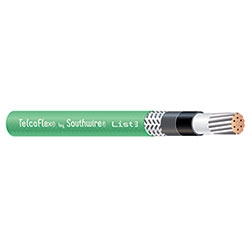At my job,the installers have been using EPDM-jacketed 4/0 welding cable in battery plant wiring. The flexibility makes it easier on the installers. I was never much involved with that, but I was recently asked to give an opinion on whether or not they should order more of this type of cable for this purpose. I was given a cut sheet that does not mention RHH, RHW, etc. Only that it is EPDM jacketed. I don't have a sample to look for markings.
Looking through the NEC, I can't find a mention of this type of cable for anything other than welding. So I have a couple of questions:
1. I'm assuming this cable is probably not suitable for these DC plants, am I right?
2. I see some other welding cable that is cross listed as RHH/RHW. Would this be OK?
The main thing I'm wondering is if the cable has (for example) the RHH mark, does 310.13 imply that it's OK for this? .
Thanks!
Steve


Comment